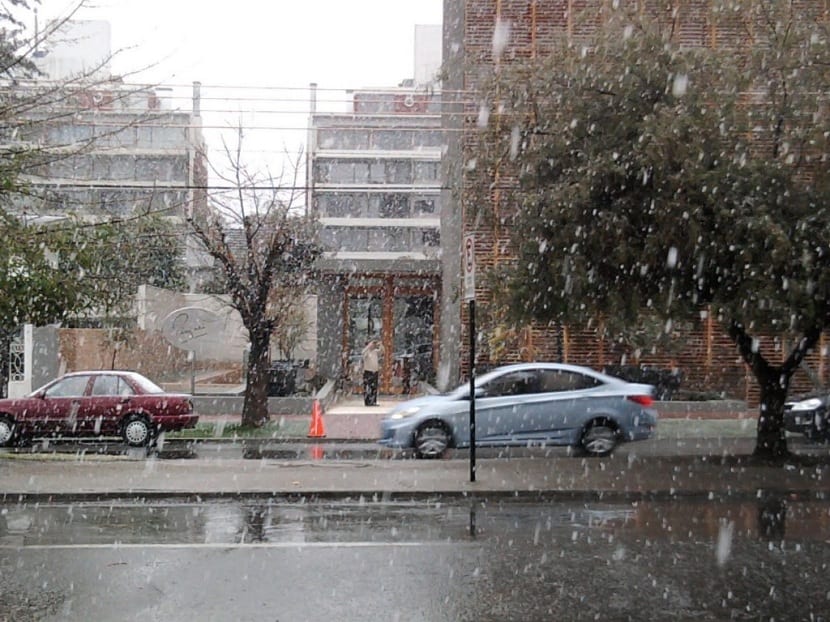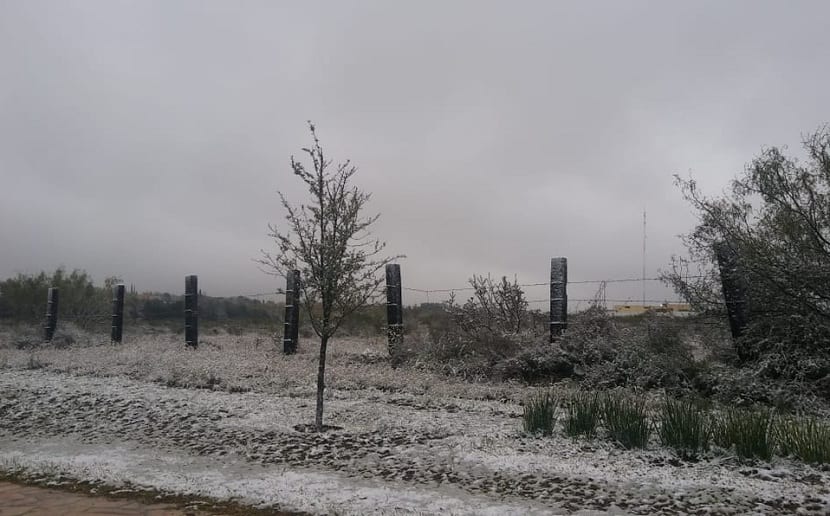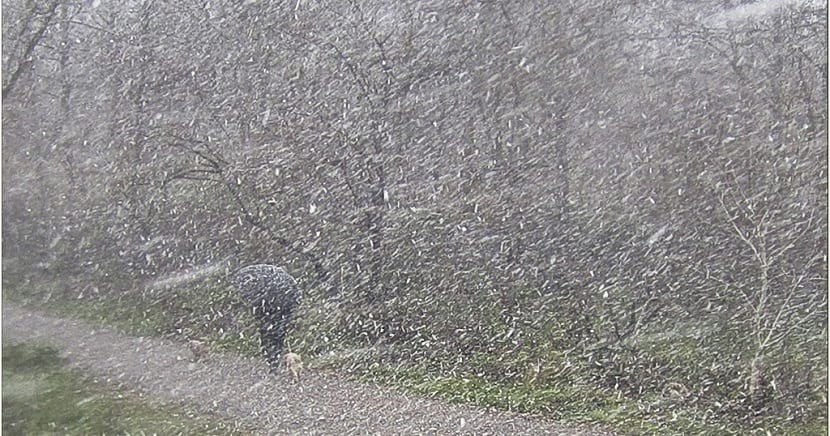
Depending on the atmospheric conditions that exist at all times, we cannot always find an exact type of precipitation. That is, it can not always rain, snow or hail, but there is also the sleet. It is a natural phenomenon in which there is both precipitation in the form of rain and snow. For this phenomenon to occur, certain environmental and atmospheric conditions must be met. In addition, this type of meteorological phenomenon also causes aggravations such as sleet.
We will clarify all this about sleet and sleet in this post.
What is sleet and when does it occur?

There are times when the environmental conditions vary. As we know, the different meteorological variables are those that govern the environmental conditions at all times. Depending on the values of atmospheric pressure, temperature, wind regime, cloudiness, moisture, etc. There may be one type of precipitation or another. The most common thing is that if the temperatures are above 0 degrees and the humidity is high, precipitation occurs in the form of rain.
On the other hand, if the temperatures are lower than 0 degrees or we are at a high altitude, where the pressure is lower, it is more frequent or probable that the precipitation occurs in the form of snow. However, these more frequent environmental conditions do not have to be the "our father" of meteorology, but there are exceptions such as sleet.
Sleet is a type of precipitation in which rain and snow occur at the same time. Part of the precipitation is frozen and the other forms water droplets or small ice crystals. For snow water to be produced there must be certain very exact environmental conditions. And it is that they only occur when the air is warm enough to begin to melt the snow, but without completely melting it. This type of air also depends on the altitude, humidity and the wind regime. Sleet cannot always occur even if the air temperature is ideal so that the water begins to melt but does not melt completely.
Ice crystals called flakes are hexagonal in shape when viewed closely.
Sleet characteristics

Sleet does not usually harden on the ground but takes on the appearance as it is coming down from the clouds. Normally, if surface temperatures are below zero degrees, the flake itself may harden and form an ice crystal once it falls to the surface. On the other hand, the freezing of these flakes on the ground can form what we know as sheets of ice or frost.
For some meteorologists, sleet is a form of precipitation in which the water is partially frozen, but it does not have to be crystal-shaped. That is, you do not need a common hexagonal pattern in this type of precipitation.
The ice that occurs in this type of precipitation it is very fine and does not form such complex structures. This fine structure occurs when temperatures are warm enough to melt the snowflake, but without actually turning it into water. For this reason, during sleet, we can see drops of water almost melted in the form of ice without becoming crystal and some snowflakes that, being thicker in size, have not thawed in time and maintain their main structure.
Maybe at sight it looks like a normal type of snow, but when viewed closely or under the microscope, it can be observed that grains similar to those of hail are formed instead of full ice crystals with a hexagonal structure. In this case they are small amorphous ice.
The difference between these precipitations is observed mainly in the composition. Water droplets are liquid in composition, hail has water in a solid state, and snow water plays with amorphous ice and snowflakes.
What is sleet

Snow water can be given in different conditions. It is possible that other meteorological variables such as humidity, atmospheric pressure and, therefore, the wind regime cause a sleet that can be the most calm to transform into a sleet. Sleet is nothing more than a sleet storm.
It is a natural phenomenon in which we can observe a storm of water and snow that is quite fine with structures and displaced strongly and at great distances by the action of the wind. So that the sleet may occur, the relative humidity should be around 100% and the air should be below zero degrees. In this case, the factor that makes the snowflakes melt into amorphous ice is the wind and the drop in atmospheric pressure. Usually, this phenomenon appears accompanied by a squall.
It usually occurs in high mountain places, where the atmospheric pressure is lower because it is located at a higher altitude and the humidity can be kept higher due to the density of trees. It also depends on the vegetation and what type it is. If the density is shrubby it will not be able to maintain the humidity as high. For these humidity values to occur, a higher humidity is needed, mainly formed by wooded areas of great density and height.
With the addition of humidity, a storm and the low pressure at altitude, there will be winds strong enough to cause a sleet storm while the flakes of amorphous ice melt. This phenomenon takes place both in autumn and in winter and spring. It is more frequent in spring when there is a specific frost and the forest density is higher due to the flowering and development time of many plants.
As you can see, in nature there is no phenomenon totally marked and established by unique characteristics. We are the ones who classify the phenomena in order to understand them better.